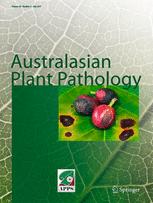Ver ítem
- xmlui.general.dspace_homeCentros e Institutos de InvestigaciónCICVyA. Centro de Investigación en Ciencias Veterinarias y AgronómicasInstituto de PatobiologíaArtículos científicosxmlui.ArtifactBrowser.ItemViewer.trail
- Inicio
- Centros e Institutos de Investigación
- CICVyA. Centro de Investigación en Ciencias Veterinarias y Agronómicas
- Instituto de Patobiología
- Artículos científicos
- Ver ítem
Zearalenone content in animal fodder samples in relation to weather conditions in Colonia Benítez, northeastern Argentina
Resumen
The northeast of Argentina is a livestock production area. Generally cattle in this area feed on grasslands and improved pastures, but their food is often supplemented with grains, protein sources and reserves in the form of hay and/or silage. However, these food sources may be colonised by fungi including Fusarium, which produce mycotoxins, one of which is zearalenone (ZEA). The aim of this study was to relate the natural occurrence of ZEA in Colonia
[ver mas...]
The northeast of Argentina is a livestock production area. Generally cattle in this area feed on grasslands and improved pastures, but their food is often supplemented with grains, protein sources and reserves in the form of hay and/or silage. However, these food sources may be colonised by fungi including Fusarium, which produce mycotoxins, one of which is zearalenone (ZEA). The aim of this study was to relate the natural occurrence of ZEA in Colonia Benítez (Chaco Province) to the temperature and moisture of the autumn preceding the winter collection of fodder samples in 2012 and 2013. The forage resources of 2012 had high ZEA contents (310 to 6279 μg/kg) in 47 % of the samples, whereas those from 2013 exhibited intermediate values of ZEA contents (131 to 296 μg/kg) in 41.6 % of the samples and low contents (< 2 to 91 μg/kg) in 50 % of the samples. The incidence of F. semitectum was higher in 2012 compared to 2013. The high concentration of ZEA found in many of the forage samples collected in July 2012 was preceded by autumn weather conditions that were exceptionally conducive to plant stress. In contrast, when meteorological factors were within normal values (as in the autumn of 2013), the pasture and feed collected in winter showed intermediate to low concentrations of ZEA. The temperature and moisture conditions prevailing during the autumn of 2012 accelerated canopy senescence of the forage plants available for livestock at the beginning of the winter. Consequently, the weather conditions during the autumn 2012 likely favoured the sharp increase in ZEA content in these pastures when compared to the other two seasons.
[Cerrar]

Fuente
Australasian plant pathology 45 (3) : 251–259. (June 2016)
Fecha
2016-05
ISSN
1448-6032 (Online)
0815-3191 (Print)
0815-3191 (Print)
Formato
pdf
Tipo de documento
artículo
Palabras Claves
Derechos de acceso
Restringido
 Excepto donde se diga explicitamente, este item se publica bajo la siguiente descripción: Creative Commons Attribution-NonCommercial-ShareAlike 2.5 Unported (CC BY-NC-SA 2.5)
Excepto donde se diga explicitamente, este item se publica bajo la siguiente descripción: Creative Commons Attribution-NonCommercial-ShareAlike 2.5 Unported (CC BY-NC-SA 2.5)

